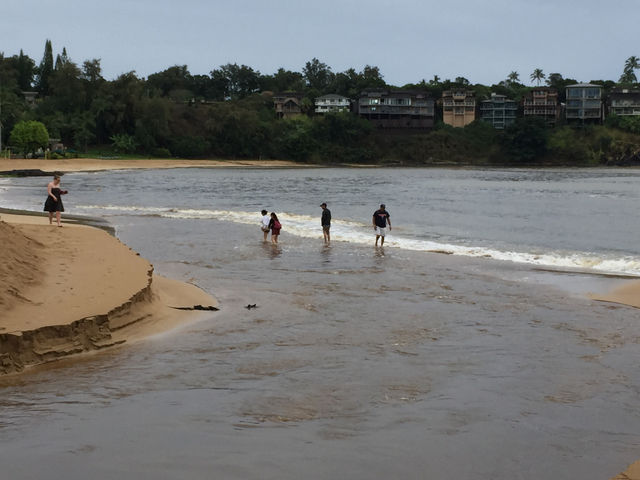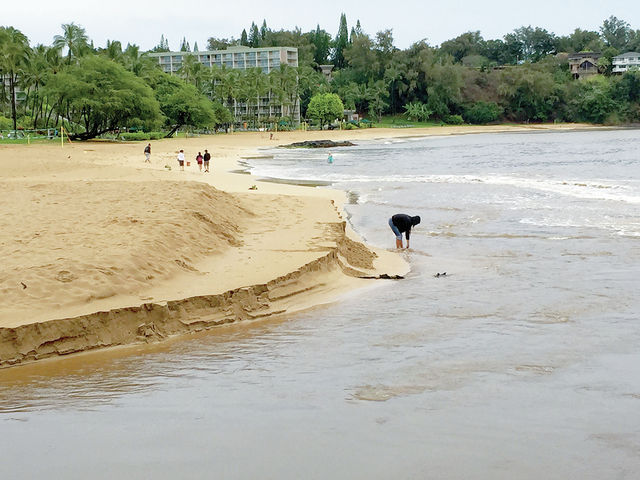LIHUE — The Hawaii Department of Health issued a brown water advisory for Kauai in light of Thursday night’s heavy rains. The advisory told the public to stay out of the water, but local citizen scientists said that’s enough to
LIHUE — The Hawaii Department of Health issued a brown water advisory for Kauai in light of Thursday night’s heavy rains.
The advisory told the public to stay out of the water, but local citizen scientists said that’s enough to keep residents and visitors out of polluted waters on Kauai.
Carl Berg, project manager for Surfrider Kauai’s Blue Water Taskforce, said he was reading the brown water advisory and standing near Nawiliwili Bay on Friday, watching some people play in the brown, polluted surf.
“DOH released a brown water advisory but nobody knows about it,” Berg said. “All those tourists and kids were swimming in Nawailiwili Bay on Friday when the brown water advisory was in effect and they didn’t know about it.”
Berg applauded HDOH’s release of the Friday brown water advisory because it was preemptive – the department’s scientists hadn’t completed the 24-hour test to actually prove contamination.
“They know when it rains some run-off is going to cause chemicals and human and animal feces to go down there so it’s really good they’re being preemptive, but not everybody reads the papers or gets the advisories,” Berg said. “They need to have warning signs on the beaches.”
Berg suggested posting warning signs at the most popular beaches first, and in places where lifeguards are present, because lifeguards “don’t want to swim in that stuff either.”
Keith Kawaoka, deputy director for environmental health for HDOH, said the department posts warning signs in areas where “evidence shows that there is a source of human sewage, as was done at Kahaluu Lagoon on Oahu, or after sewage spills.”
“When HDOH is informed of possible pollution impacting surface waters, the department generally conducts studies and investigations to determine the cause or sources,” Kawaoka said.
Both the Blue Water Task Force and HDOH test areas on the island for the presence of the bacteria Enterococcus, which is an indication of feces in the water and can cause urinary tract infections, sore throat, and cold-like symptoms.
Recently, the Blue Water Task Force released its 2015 water quality report, which highlights the findings from their monthly sampling of canals, surf breaks, and streams. The report also included results from HDOH, which tests weekly at various beaches.
The results from that report show that there are places, like the Waiopili Stream and Nawiliwili Stream, which are chronically contaminated.
Berg says that HDOH should be putting up signs in those areas warning the public of chronic contamination.
“This is a year-long study that shows chronic contamination of Enterococcus, and when the counts are extremely high, we feel that’s a pubic health risk and the public should be warned until such time as the risk no longer exists,” Berg said.
Kawaoka did not comment on the idea of posting signs at places where Surfrider’s data shows chronic contamination. He did say the department of health is also taking other steps to address water pollution sources which may affect human health.
“Effective this month, the governor promulgated rules banning new cesspools and making available tax credits to upgrade cesspools in order to reduce wastewater pollution,” Kawaoka said.
•••
Jessica Else, enviromental reporter, can be reached at 245-0452 or jelse@thegardenisland.com.



